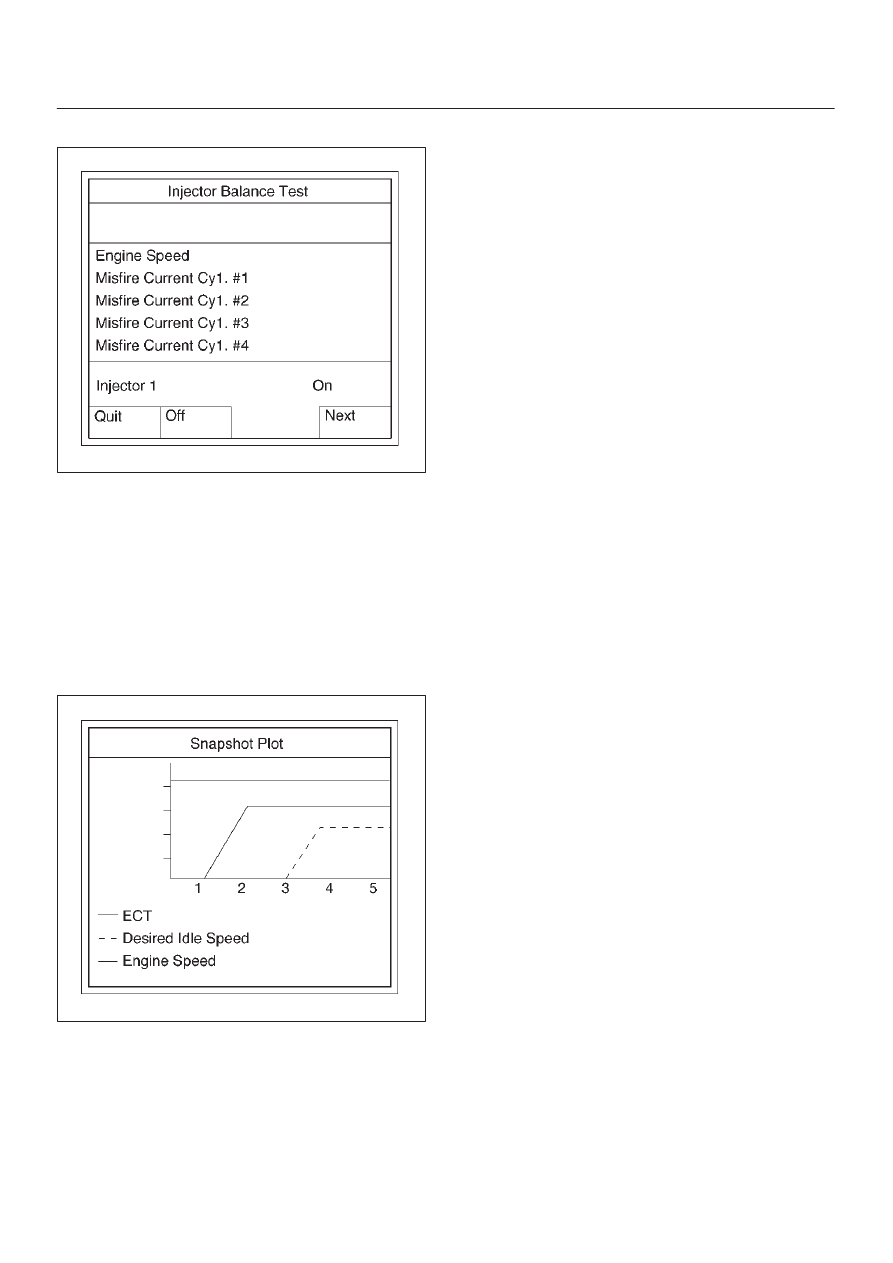Content .. 2253 2254 2255 2256 ..
Opel Frontera UBS. Manual - part 2255

6E–56
6VE1 3.5 ENGINE DRIVEABILITY AND EMISSIONS
5. Select injector number and push “injector off” soft key.
060RY00105
6. Make sure of engine speed change.
7. If engine speed changes, the injector electric circuit is
normal.
If engine speed does not change, the injector electric
circuit or the injector itself is not normal.
Plotting Snapshot Graph
This test selects several necessary items from the data
list to plot graphs and makes data comparison on a long
term basis. It is an effective test particularly in emission
related evaluations.
060RX037
For trouble diagnosis, you can collect graphic data (snap
shot) directly from the vehicle.
You can replay the snapshot data as needed. Therefore,
accurate diagnosis is possible, even though the vehicle is
not available.